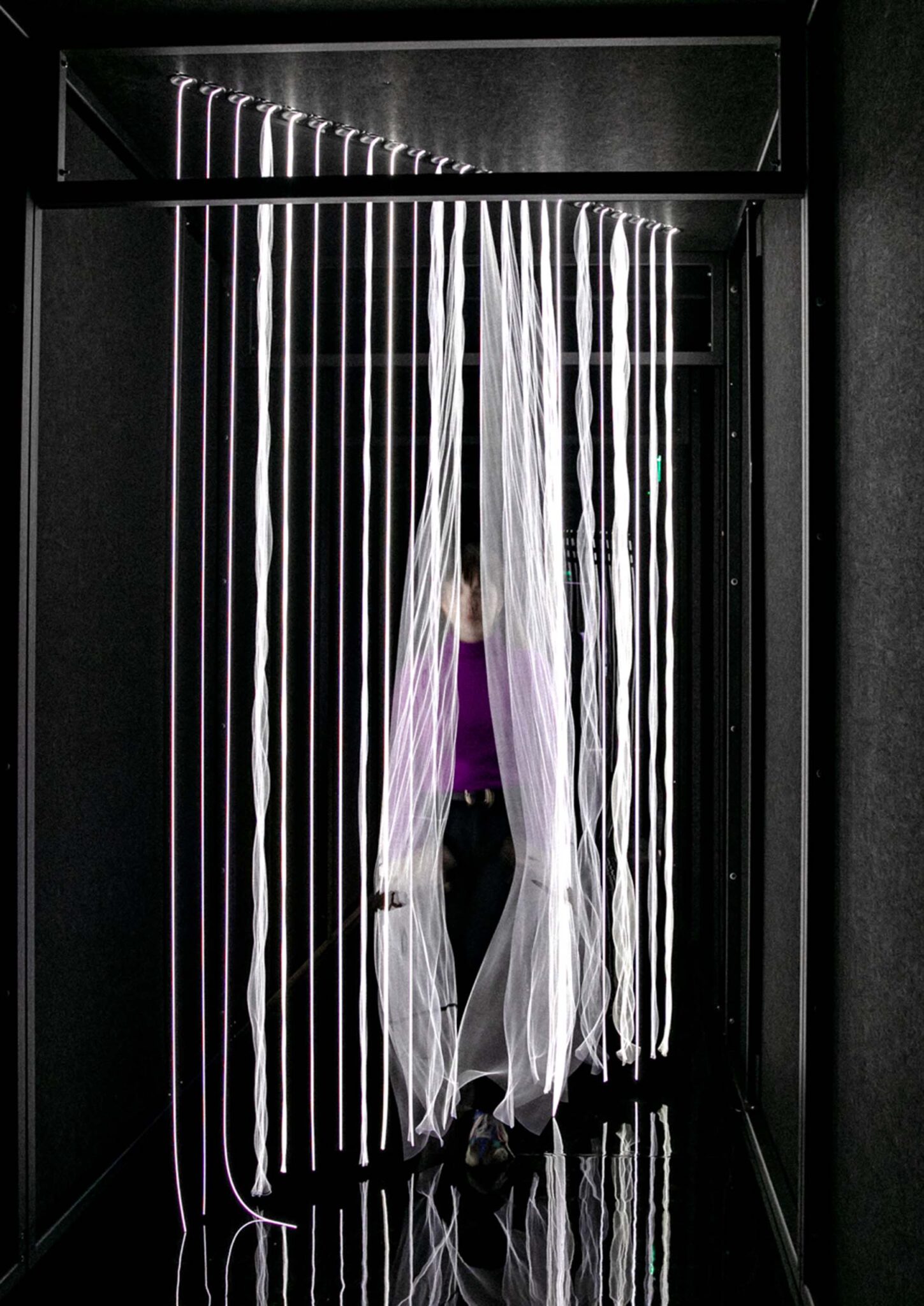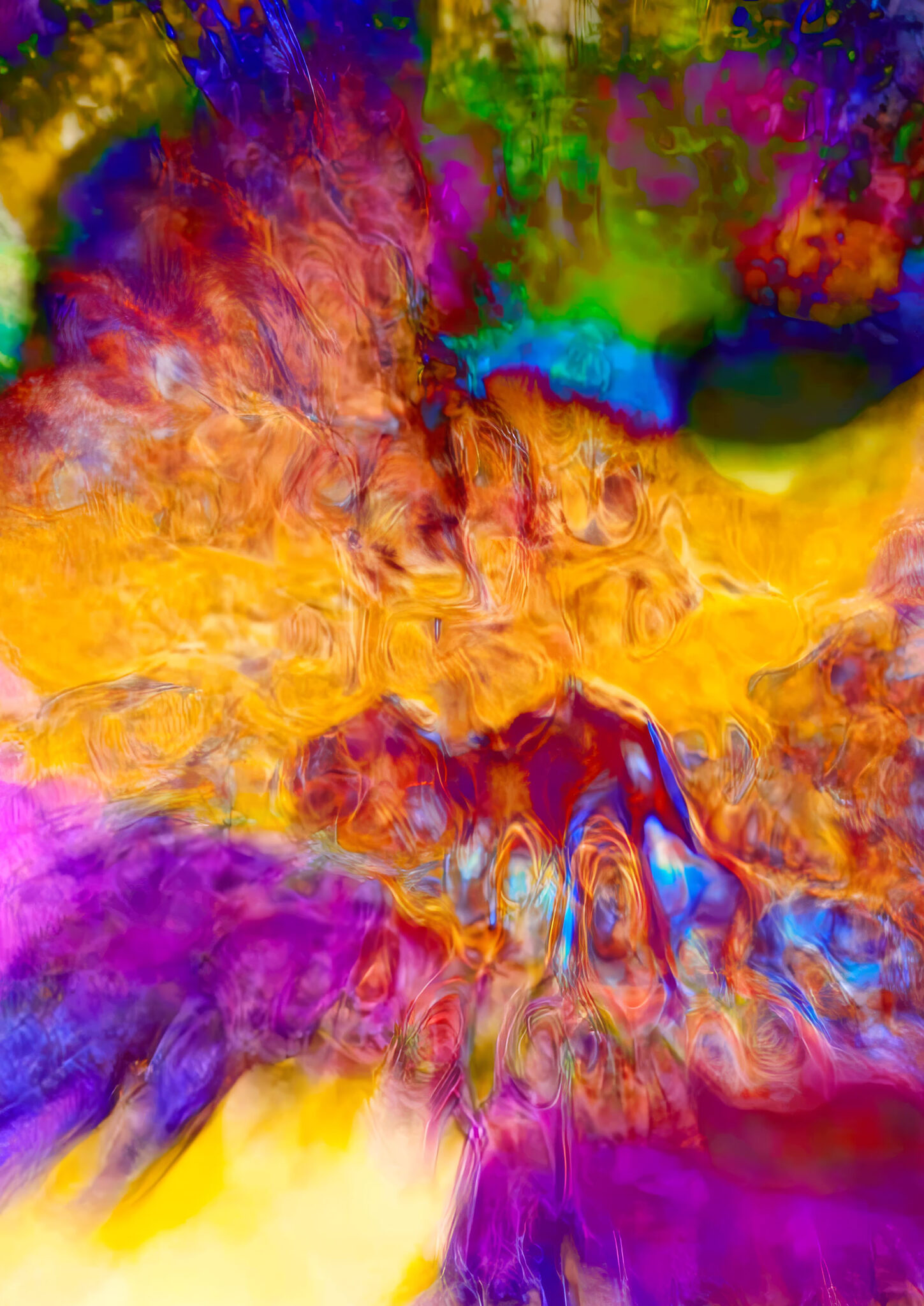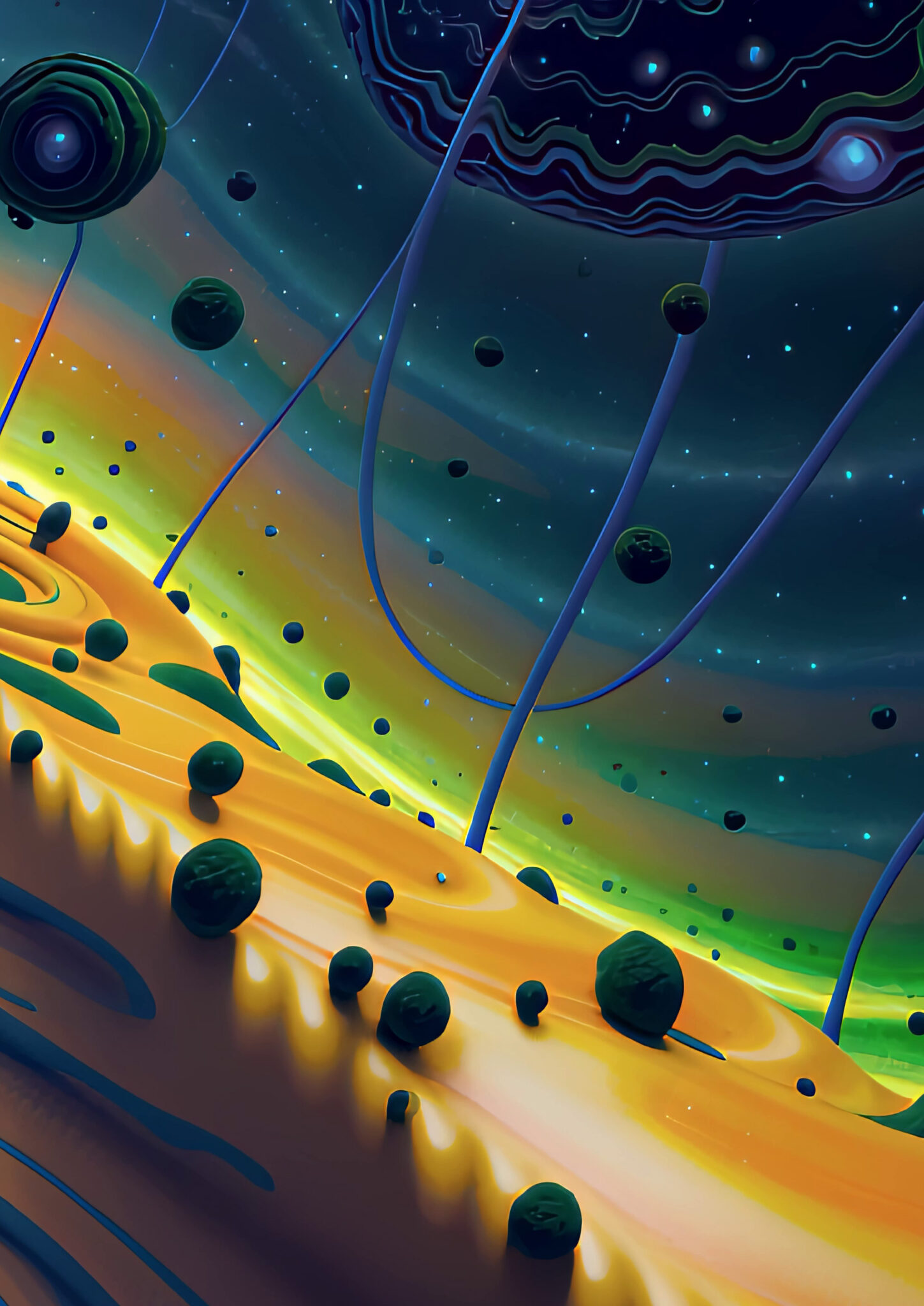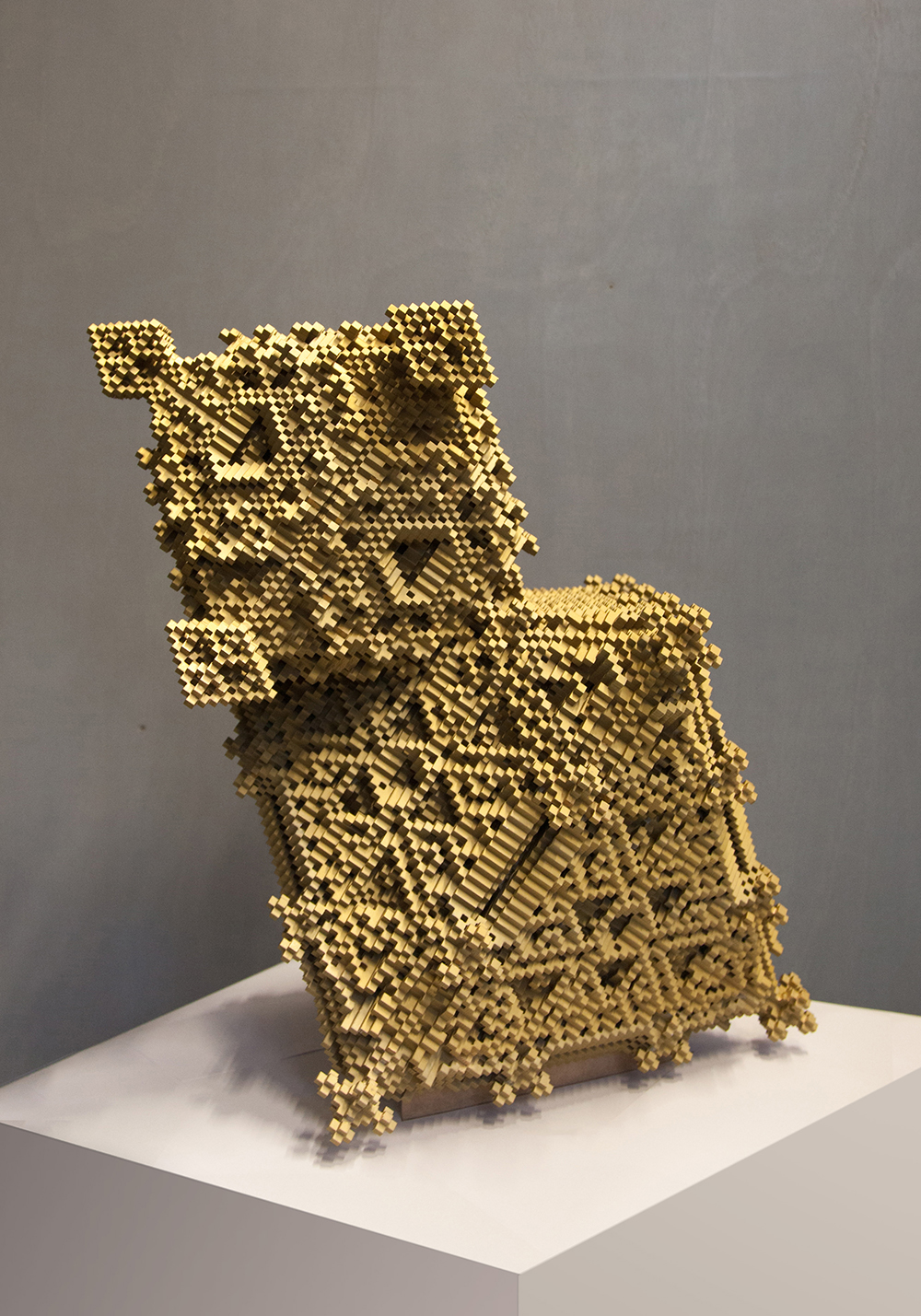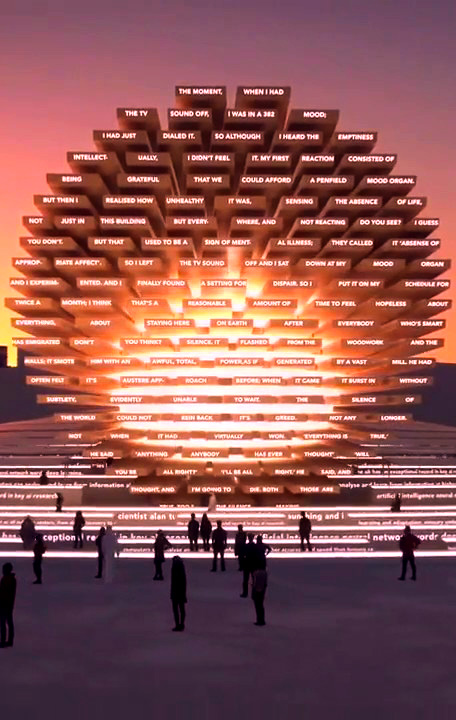
Jennifer Steinkamp
EON
“I considered the first life forms on Earth and how we came to be as a way to refer to the Natural Sciences. I looked at fossil records of the first multi cellular organisms of the Ediacaran Period, 555 million years ago for inspiration. I was struck by the theory of symbiosis in evolution; our DNA ancestors are the resultant fusion of single cellular organisms and bacteria. The millions of bacteria in our bodies are our foremothers. EON is a speculative fiction, a depiction of early life forms underwater. The Universe was formed 13.7 billion years ago. The Earth is 4.543 billion years old. Cyanobacteria or blue-green algae were the first microbes to create oxygen on Earth via photosynthesis 3.5 billion years ago. First humans 200,000-300,000 years ago.” Jennifer Steinkamp
